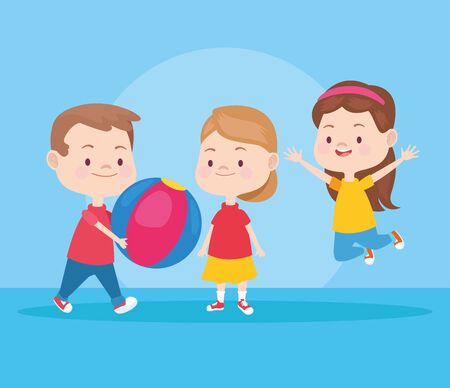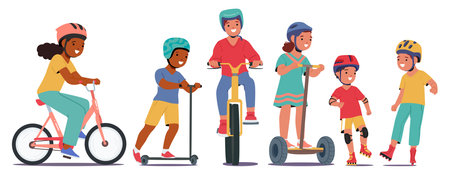1. Understanding Motor Challenges in Children with Autism
Children on the autism spectrum often face unique physical and motor challenges that can impact their daily lives. Understanding these challenges is an important first step in supporting their development and participation at home, school, and in the community. While every child is different, there are some common patterns seen among kids with autism when it comes to movement and coordination.
Overview of Common Motor Delays
Many children with autism experience delays in reaching physical milestones such as sitting up, crawling, or walking. These delays might be noticed by parents or caregivers during the toddler years. Sometimes, the differences are subtle—like being a bit clumsier than peers or taking longer to learn how to ride a bike.
| Common Motor Delays | Examples |
|---|---|
| Gross Motor Skills | Late walking, awkward running, trouble jumping or climbing stairs |
| Fine Motor Skills | Difficulty holding crayons, using scissors, buttoning shirts |
| Balance Issues | Trouble standing on one foot, frequent tripping or falling |
| Poor Muscle Tone (Hypotonia) | Appearing “floppy,” tiring quickly during activity |
Coordination Difficulties and Physical Challenges
Besides delays, many children with autism also struggle with coordination—how smoothly their muscles work together for movement. This can show up as unsteady walking, difficulty catching or throwing balls, or awkward posture. Sensory sensitivities can add another layer of challenge; for example, a child who dislikes certain textures may avoid playground equipment or resist certain physical activities.
Sensory Processing and Movement
Sensory processing differences are very common among kids on the spectrum. Some children may be extra sensitive to touch, sounds, or movement, while others may seem under-responsive. These sensory differences can impact how comfortable a child feels moving through their environment or trying new physical activities.
| Sensory Challenge | How It Affects Movement |
|---|---|
| Sensitivity to Touch (Tactile Defensiveness) | Avoids messy play, dislikes certain clothing textures or playground surfaces |
| Vestibular Sensitivity (Balance/Movement) | Gets dizzy easily, avoids swings or slides, reluctant to jump or spin |
| Proprioceptive Challenges (Body Awareness) | Bumps into things, uses too much/too little force when playing or writing |
Why These Challenges Matter
Difficulties with motor skills and coordination can affect more than just gym class—they influence independence in self-care tasks like dressing and feeding, social interactions on the playground, and overall confidence. Recognizing these challenges early allows families and therapists to provide targeted support that makes a real difference in a child’s everyday life.
Role of Physical Therapy in Supporting Development
How Physical Therapists Help Children with Autism
Physical therapists (PTs) play a key role in helping children on the autism spectrum develop essential motor skills and greater independence. Every child with autism is unique, and physical therapists use specialized assessments to understand each childs strengths and challenges. These assessments often look at how a child moves, balances, walks, and interacts with their environment. After learning about a child’s specific needs, PTs create individualized treatment plans that focus on building skills like coordination, balance, strength, and flexibility.
Assessment Process
| Area Assessed | What PTs Look For |
|---|---|
| Gross Motor Skills | Running, jumping, climbing, walking patterns |
| Fine Motor Skills | Grasping objects, manipulating toys or tools |
| Balance & Coordination | Standing on one foot, catching/throwing a ball |
| Body Awareness | Understanding where their body is in space (proprioception) |
| Functional Mobility | Moving around the classroom or home safely and efficiently |
Addressing Unique Needs Through Therapy
Once the PT understands a childs needs, therapy sessions are designed to be fun and motivating. Activities may include obstacle courses, balance games, or exercises using balls and other equipment. The goal is to help children gain confidence in their bodies and improve their ability to participate in daily activities at home, school, and in the community. Therapists also work closely with families and teachers to provide tips and exercises that can be done outside of therapy sessions for even greater progress.
Main Goals of Physical Therapy for Children with Autism:
- Improve gross and fine motor skills: Helping children move better and more confidently.
- Increase independence: Supporting kids so they can do more things on their own.
- Enhance participation: Making it easier for children to join in at school and during playtime.
- Promote safety: Teaching safe movement patterns to prevent falls or injuries.
- Build self-esteem: Encouraging success through achievable challenges.
Physical therapists bring compassion and expertise to help each child reach their fullest potential by tailoring support to their unique abilities and goals.

3. Evidence-Based Interventions and Techniques
Overview of Proven Physical Therapy Approaches
Physical therapy (PT) for children on the autism spectrum in the United States uses a variety of evidence-based strategies to address motor delays and improve coordination. Therapists focus on helping kids develop strength, balance, and everyday movement skills, making activities more enjoyable and accessible. The following approaches are commonly used by physical therapists working with autistic children.
Research-Backed Strategies
| Intervention/Technique | Main Goal | How It Works |
|---|---|---|
| Task-Oriented Training | Functional movement improvement | Children practice everyday tasks like walking up stairs or catching a ball, building both skill and confidence through repetition. |
| Balance and Coordination Exercises | Postural stability & body awareness | Activities such as standing on one foot, walking along a line, or using balance boards help strengthen core muscles and improve steadiness. |
| Strengthening Activities | Muscle development | Simple exercises like squats, animal walks, or resistance band games make muscle-building fun and engaging for kids. |
| Sensory Integration Techniques | Sensory processing support | Therapists use swings, textured mats, or obstacle courses to help children get used to different sensations while moving. |
| Gross Motor Play | Whole-body movement skills | Games like jumping jacks, hopscotch, or playing catch encourage large movements and teamwork. |
| Visual Supports & Prompting | Easier learning and following directions | Pictures or step-by-step cards guide children through exercises, making instructions clear and reducing anxiety. |
Therapeutic Activities Used in the U.S.
Obstacle Courses: These are popular in American clinics and schools. They combine climbing, crawling, balancing, and jumping—making therapy feel like play while targeting many skills at once.
Dancing Games: Using music or video games like “Just Dance” can motivate kids to move their bodies rhythmically, supporting coordination.
Pretend Play: Activities such as pretending to be animals (bear walk, crab walk) are not only fun but also work on muscle strength and body control.
Yoga for Kids: Simple yoga poses help with flexibility, calming sensory systems, and improving focus.
The Role of Family Involvement
In the U.S., therapists often involve parents and caregivers in sessions. Families receive home exercise programs with easy-to-follow instructions so children can keep practicing their new skills outside of the clinic. Consistency between therapy sessions and home life is key to progress.
4. Collaborating with Families and Educational Teams
When supporting children on the autism spectrum through physical therapy, close teamwork with families, teachers, and other specialists is essential. Working together helps create a care plan that fits smoothly into daily routines, both at home and at school. Here are some practical tips for building strong partnerships to help every child reach their full potential.
Understanding Each Childs Unique Needs
Every child with autism has their own strengths, challenges, and ways of learning. Physical therapists work closely with parents and educators to understand what each child enjoys, what motivates them, and where they need extra support. This information helps tailor therapy goals and activities to fit the child’s unique profile.
Tips for Effective Collaboration
| Tip | Description |
|---|---|
| Open Communication | Share updates about the childs progress regularly. Use simple language and invite questions from parents and teachers. |
| Set Shared Goals | Develop goals together that matter to the family and school team—like improving balance for playground play or coordination for classroom tasks. |
| Integrate Therapy into Daily Routines | Suggest activities that can be done during regular routines (e.g., morning stretches before school, movement breaks during class). |
| Provide Easy-to-Follow Home Exercises | Give clear instructions, pictures, or videos so families can practice skills at home without stress. |
| Respect Cultural Differences | Acknowledge family traditions and values when planning activities, making sure recommendations fit into their lifestyle. |
| Check In Often | Schedule regular meetings (in person or virtually) to review progress and adjust the plan as needed. |
The Role of School Teams in Physical Therapy
Teachers, aides, and other school staff are important partners in helping children practice new motor skills throughout the day. Physical therapists can offer classroom strategies—like using sensory tools or adapting seating—to make participation easier for kids on the spectrum. Regular collaboration ensures everyone is working toward the same goals.
Sample Ways to Include Therapy in School Routines:
- Movement Breaks: Short physical activities between lessons to help focus.
- Adaptive Equipment: Using items like wiggle cushions or therapy balls during class.
- Peer Support: Encouraging classmates to join in games or exercises for social skill-building.
- Sensory-Friendly Spaces: Providing calm areas for children who need a break from noise or activity.
Your Team Makes All the Difference!
The most successful outcomes happen when families, educators, and therapists work as a united team. By sharing ideas and supporting each other, we can make sure every child with autism gets the physical therapy support they need—in ways that truly fit their everyday life.
5. Promoting Participation in Community Activities
Why Community Involvement Matters
For children on the autism spectrum, joining community activities like sports and recreation offers more than just physical benefits. These experiences help develop social skills, boost self-confidence, and encourage friendships. Physical therapists play an important role in guiding families to find activities that fit their childs interests and abilities.
Encouraging Engagement: Practical Tips
Each child is unique, so finding the right activity might take some exploration. Here are some ways to help children with autism get involved in their local communities:
- Start Small: Begin with short sessions or smaller groups to make participation less overwhelming.
- Choose Inclusive Programs: Look for sports leagues, dance classes, or art workshops that welcome kids of all abilities.
- Prepare Ahead: Visit the location before the first session or talk about what will happen using pictures or stories.
- Use Visual Supports: Schedules or visual cues can help explain new routines and reduce anxiety.
- Practice Skills at Home: Practicing movements or social greetings ahead of time can build confidence for real-life situations.
Popular Activities for Children with Autism
| Activity Type | Description | Potential Benefits |
|---|---|---|
| Youth Sports (e.g., soccer, swimming) | Team or individual sports adapted for different skill levels | Coordination, teamwork, following directions |
| Recreation Centers | Open gym times, sensory-friendly hours, adaptive classes | Physical activity, social interaction, exposure to new environments |
| Parks & Playgrounds | Unstructured play in safe outdoor spaces | Balance, strength, peer engagement |
| Dance & Movement Classes | Music-based movement with simple steps and routines | Rhythm, motor planning, expression through movement |
| Scouting & Community Clubs | Youth groups with inclusive missions and hands-on activities | Lifeskills, social communication, belonging to a group |
The Role of Physical Therapists in Community Participation
A physical therapist can work directly with families to identify suitable programs and prepare children for participation. They may also collaborate with coaches or instructors to adapt activities as needed. This team approach helps ensure each child feels supported while trying new things.
Fostering a Sense of Belonging and Well-being
When children with autism join community activities, they have more chances to move, make friends, and feel included. With encouragement from both family and professionals like physical therapists, these experiences can become a regular—and enjoyable—part of everyday life.


